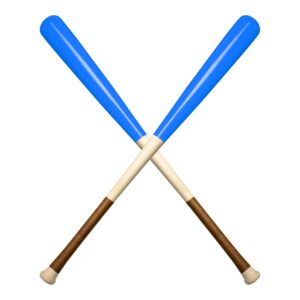Choosing the right baseball bat involves understanding how to measure for the correct size, which depends on two main factors: length and weight. While it might seem confusing at first, following these straightforward steps will help you find the perfect bat for your needs.
Step 1. Choosing the Right Baseball Bat Length
Determining the appropriate bat length can be simplified using a few quick methods:
To determine the proper bat length, extend your arm horizontally so it’s parallel to the ground. Measure from the center of your chest to the end of your fingertips. This measurement will serve as a good starting point for finding the proper baseball bat length.
Another method, particularly useful for younger players who are still growing, involves standing up straight and resting the knob of the bat in the center of your palm. The head of the bat should just touch the floor when the bat is held vertically.
A third technique involves placing the bat’s handle in the center of your chest and extending the bat forward. If your arm can reach the barrel of the bat, then it is appropriate for you.
Step 2. Understanding Bat Drop
You need to understand bat drop to find the right baseball bat size. Bat drop is the difference between the length and weight of the bat. It is calculated as follows:
Bat Drop = Bat Length − Bat Weight
For example, a 30-inch bat with a -10 bat drop weighs 20 ounces. The higher the bat drop number, the lighter the bat.
Bat Drops by Certification
Here are the typical bat drop options based on different certifications:
- USA: -5, -8, -10, -11, -12, -13
- USSSA: -5, -8, -10, -11, -12, -13
- BBCOR: -3
Step 3. Choosing the Right Baseball Bat Weight (and Drop)
Different leagues and age groups have specific rules about bat weight and drop. To ensure compliance, it’s important to always check the regulations for your level of play.
Strength also plays a significant role in choosing the right bat weight. Younger players learning to swing should use a higher drop for a lighter bat. Stronger, more experienced players might prefer a heavier bat that matches their playing style. Personal preference often dictates the choice of bat weight and drop. Heavier bats are better for contact hitters who need control and slower bat speed, while power hitters might opt for a lighter bat to achieve a quicker swing through the hitting zone.
Hope That Will Help!
By following these guidelines, you can find a baseball bat that suits your size, strength, and style of play, enhancing your performance on the field.
